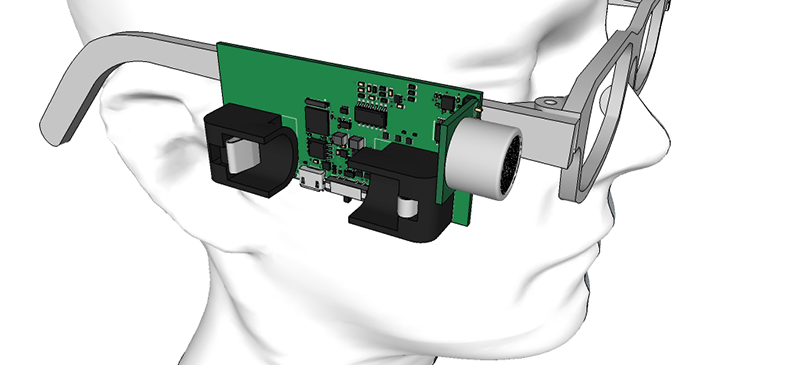The inspiration for [K.C. Lee]’s project for The Hackaday Prize didn’t come from seeing a grave injustice or inhuman suffering. He was watching Daredevil on Netflix. A show about a blind guy who fights crime in his spare time. People don’t have superhuman senses, and radioactive material falling off a truck in New York City leads to Ninja Turtles, not superheros. Still, a crude form of echolocation is well within the reach of the a capable hacker and would be very useful for those who are legally blind.
[K.C.]’s idea for human echolocation is a small wearable with ultrasonic sensors, 6DOF IMUs, and audio and haptic feedback. With a bit of math and a lot of practice, it’s possible to walk down a hallway, avoid obstacles, and find your way around without sight.
Human echolocation is a real thing, and it’s great to see a device that makes this minor human superpower a little more accessible. [K.C.] says there are 40 million people world wide that could use a device like this, and for an idea that was inspired by a superhero on TV, it’s one of the more interesting inspirations for an entry to The Hackaday Prize.






















Not a inhuman suffering? He watched Daredevil on Netflix ! Not enough for you?
No Inhumans suffering on Daredevil, thats the other Marvel show.
(sorry)
Perhaps (if you could find a way to power/fund it) a full body suit of vibration motors, set up like a pressure map with a network of distance sensors, creating a cube around the user. Intrusion into the cube provides a signal to the corresponding area of skin and increases in intensity with increasing proximity.
What you suggest is a very different approach. I am not sure if it is economical solution because of the large amount of sensors and haptic feedback. Not to mention that body shape and sizes can be very different.
In the end if you don’t make it easy to mass produce and affordable to the end users, it will be forever a research toy and not help the users.
For the hallway following : be warned that objects (like walls) at a small angle often do not give a detectable echo. But kudo’s for the initiative. It would not be fun if the first version left nothing to improve on.
Regards,
Ronnie
If the angle is very small, the user is more or less parallel with the walls, i.e. not about the run into the wall, so might be an non-issue.
FYI I am using the analog comparator inside the ARM microcontroller with programmable threshold for the echo detection. That part I still have to experiment to figure out.
http://redwood.berkeley.edu/w/images/temp/a/a4/20140410062132!phpiwo0CH.pdf
“…radioactive material falling off a truck in New York City leads to Ninja Turtles, not superheros.”
Okay, a couple things. First , the Ninja Turtles ARE superheroes. (They have greater than human strength, which they use to fight off alien invaders, evil ninjas, and other mutants.) More importantly, radioactive material falling off a truck leads to BOTH. In the original black and white Ninja Turtles comic, the canister of ooze that mutated the turtles was the same one that blinded Matt Murdock. (Probably not canon to avoid a lawsuit from Disney, but it was in the original issue.)